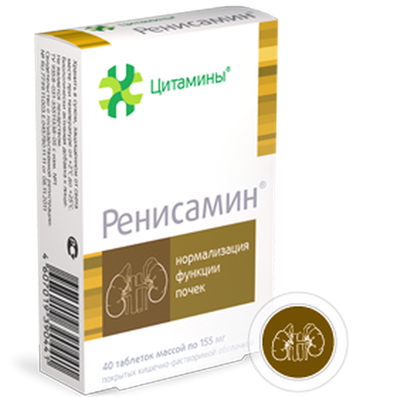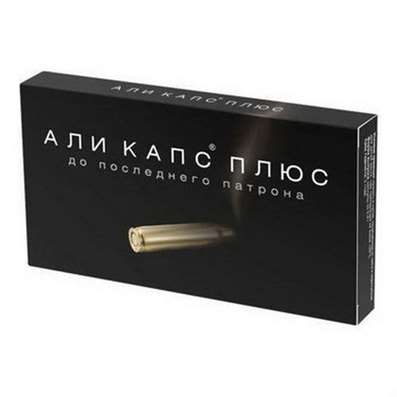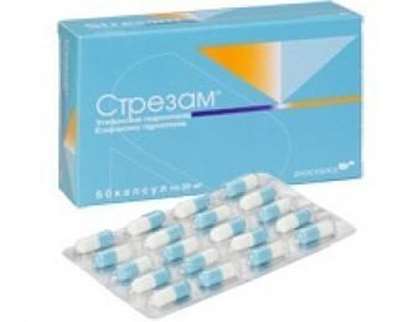Instruction for use: Rheopolyglukin
I want this, give me price
Dosage form: Solution for infusions
Active substance: Dextranum 30000-40000
ATX
B05AA05 Dextran
Pharmacological group
Substitutes for plasma and other blood components
The nosological classification (ICD-10)
A41.9 Septicemia, unspecified: Septic diseases; Septicemia / bacteremia; Toxico-infectious shock; Endotoxin shock; Bacterial septicemia; Bacterial infections of severe course; Generalized infections; Generalized systemic infections; Infections generalized; Wound sepsis; Septiccopymia; Septic-toxic complications; Septicemia; Septic conditions; Septic shock; Septic condition; Septic shock
A48.3 Toxic shock syndrome: Bacteremic shock; Infectious-toxic shock; Intoxication syndrome; Toxico-infectious shock; Toxic shock; Chronic intoxication in diseases of the digestive tract; Chronic intoxication in gastrointestinal infections; Endotoxin shock
H16 Keratitis: Adenoviral keratitis; Bacterial keratitis; Spring keratitis; Deep keratitis without epithelial lesion; Deep keratitis without epithelial damage; discoid keratitis; Outline keratitis; keratitis rosacea; Keratitis with corneal destruction; Superficial keratitis; punctate keratitis; Traumatic keratitis; Superficial punctate keratitis
H31 Other disorders of choroid
H48 Disorders of optic [2nd] nerve and visual pathways in diseases classified elsewhere
I73 Other peripheral vascular disease: peripheral angiopathy; limb arteriopathy; The disease of arteries; Violations of peripheral arterial circulation; Lack of blood flow arteriovenous; Obliterating diseases of arteries; occlusive disease; Occlusive disease with severe intermittent claudication; obliterating diseases of arteries; Chronic obliterating peripheral arterial disease; endarteritis obliterans; Ischemic lesions stop
I74 Embolism and arterial thrombosis: Thrombosis of effort (stress); Arterial thrombosis; Arteriothrombosis; Subacute and chronic arterial thrombosis; Subacute thrombosis of peripheral arteries; Postoperative thrombosis; Vascular thrombosis; Vascular embolism; Thrombosis of aortocoronary shunt; Arterial thrombosis; Thrombosis of arteries; Coronary artery thrombosis; Coronary thrombosis; Thrombosis of blood vessels; Thrombosis with ischemic stroke; Thrombosis with general surgical operations; Thrombosis in Oncology Operations; Vascular thrombosis; Thrombus formation in the postoperative period; Thrombotic complications; Thromboembolic diseases; Thromboembolic syndrome; Thromboembolic complication in the postoperative period; Thromboembolism of arteries; Partial vascular thrombosis; Embolism; Embolism of arteries
I80 Phlebitis and thrombophlebitis: Diseases of peripheral vessels; Inflammation of superficial veins; Inflammatory diseases of veins; Deep venous thrombophlebitis; The disease of veins; Disease of the veins of the lower extremities; Diseases of peripheral vessels; Migrating phlebitis; Insufficiency of veins of lower extremities; Exacerbation of chronic thrombophlebitis; Acute thrombophlebitis; Acute thrombophlebitis of superficial veins; Periphlebitis; Periflebit surface; Superficial inflammation of veins; Surface thrombophlebitis; Surface phlebitis; Thrombophlebitis; Deep vein thrombophlebitis; Thrombophlebitis superficial; Phlebitis; Phlebitis of deep veins; Phlebitis of superficial veins; Phlebopathy; Chronic thrombophlebitis; Endophlebitis
K65 Peritonitis: Abdominal infection; Intra-abdominal infections; intra-abdominal infections; Diffuse peritonitis; abdominal Infections; Infections of the abdominal cavity; The infection of the abdominal cavity; The infection of the gastrointestinal tract; Spontaneous bacterial peritonitis
K85 Acute pancreatitis: Acute pancreatitis; Pancreatitis; Pancreatitis haemorrhagic; acute Pancreatitis; Sepsis pancreatogenic; Acute necrotizing pancreatitis; edematous pancreatitis
K86.1 Other chronic pancreatitis: Chronic pancreatitis; recurrent pancreatitis; chronic Pancreatitis; Exacerbation of chronic pancreatitis; Pancreatitis with exocrine insufficiency
R57.1 Hypovolemic shock: Hypovolemic shock during surgery; Acute hypovolemia
R57.8.0 * Burn shock: Pain shock for burns; Burn shock
R58 Bleeding, not elsewhere classified: Abdominal apoplexy; Hemorrhagia; Haemorrhage of the esophagus; Hemorrhage; Generalized bleeding; Diffuse bleeding; Diffuse bleeding; Prolonged bleeding; Blood loss; Blood loss during surgical interventions; Bleeding during surgery and in the postoperative period; Bleeding during labor; Bleeding and haemorrhage in hemophilia B; Bleeding from the gums; Bleeding intraoperative abdominal; Bleeding against a background of coumarin anticoagulants; Hepatic hepatitis; Bleeding in hemophilia A; Bleeding at hemophilia A; Bleeding with inhibitory forms of hemophilia A and B; Bleeding due to leukemia; Bleeding in patients with leukemia; Bleeding; Bleeding due to portal hypertension; Bleeding due to hyperfibrinolysis; Drug bleeding; Local bleeding; Local bleeding due to activation of fibrinolysis; Massive blood loss; Acute blood loss; Parenchymal hemorrhage; Hepatic bleeding; Postoperative hemorrhage; Kidney bleeding; Vascular-platelet hemostasis; Traumatic bleeding; Threatening bleeding; Chronic blood loss
T30 Thermal and chemical burns of unspecified site: Pain syndrome with burns; Pain in burns; Pain with burns; Sluggishly healing post-burn wounds; Deep burns with a wet scab; Deep burns with abundant compartments; Deep burn; Laser burn; Burn; Burn of rectum and perineum; Burn with mild exudation; Burn disease; Burn injury; Superficial burn; Superficial burn of I and II degree; Superficial skin burns; After-burn trophic ulcer and wound; Post-burn complication; Loss of fluid in burns; Sepsis burn; Thermal burns; Thermal skin lesions; Thermal burn; Trophic after-burn ulcers; Chemical burn; Surgical burn
T79.4 Traumatic shock: Haemorrhagic shock; Crash Syndrome; Posthemorrhagic shock; Postoperative shock; Post-traumatic shock; Post-traumatic shock; Traumatic shock; Syndrome of hemorrhagic shock and encephalopathy
T81.1 Shock during or after the procedure, not elsewhere classified: Operating shock; Postoperative shock; Operational shock
Z100 * CLASS XXII Surgical practice: Abdominal surgery; adenomectomy; Amputation; Coronary angioplasty; Angioplasty of the carotid arteries; Antiseptic skin treatment for wounds; Antiseptic Hand; Appendectomy; atherectomy; Balloon coronary angioplasty; Vaginal hysterectomy; The coronary bypass; Interventions in the vagina and cervix; Interventions on the bladder; Intervention in the mouth; Restoration and reconstructive surgery; Hand hygiene of medical personnel; Gynecologic surgery; Gynecological intervention; Gynecological surgery; Hypovolemic shock during operations; Disinfection of purulent wounds; Disinfection of wounds edges; Diagnostic intervention; Diagnostic procedures; Cervical Diathermocoagulation; Long-surgery; Replacing the fistula catheters; Infection in orthopedic surgery; Artificial heart valve; cystectomy; Short-term outpatient surgery; Short-term operation; Short surgical procedures; Krikotireotomiya; Blood loss during surgery; Bleeding during surgery and in the postoperative period; Kuldotsentez; laser photocoagulation; laser coagulation; retinal laser coagulation; Laparoscopy; Laparoscopy in Gynecology; CSF fistula; Small gynecological operations; Small surgical procedures; Mastectomy and subsequent plastic; mediastinotomy; Microsurgical operations on the ear; Mukogingivalnye operation; suturing; Minor surgery; neurosurgical operation; Immobilization of the eyeball in ophthalmic surgery; testectomy; pancreatectomy; Perikardektomiya; The period of rehabilitation after surgery; The period of convalescence after surgery; Percutaneous transluminal coronary angioplasty; Pleural thoracentesis; Pneumonia postoperative and posttraumatic; Preparation for surgical procedures; Preparation for surgery; Preparation of the surgeon's hands before surgery; Preparation of the colon for surgical procedures; Postoperative aspiration pneumonia in neurosurgical and thoracic surgery; Postoperative nausea; Postoperative bleeding; postoperative granuloma; postoperative shock; The early postoperative period; myocardial revascularization; Radiectomy; gastric Resection; bowel resection; uterine Resection; liver Resection; enterectomy; Resection of part of the stomach; Reocclusion of the operated vessel; Bonding tissues during surgical procedures; Removal of sutures; Condition after eye surgery; Condition after surgery; Condition after surgery in the nasal cavity; Condition after gastrectomy; Status after resection of the small intestine; Condition after tonsillectomy; Condition after removal of the duodenum; Condition after phlebectomy; Vascular surgery; Splenectomy; Sterilization of surgical instruments; Sterilization of surgical instruments; sternotomy; Dental surgery; Dental intervention in periodontal tissues; strumectomy; Tonsillectomy; Thoracic surgery; Thoracic surgery; total gastrectomy; Transdermal intravascular coronary angioplasty; Transurethral resection; Turbinektomiya; Removal of a tooth; cataract surgery; Removal of cysts; tonsillectomy; Removal of fibroids; Removing the mobile primary teeth; Removing polyps; Removing broken tooth; Removal of the uterus body; Removal of sutures; Fistula likvoroprovodyaschih ways; Frontoetmoidogaymorotomiya; Surgical infection; Surgical treatment of chronic limb ulcers; Surgery; The surgery in the anal area; The surgery on the colon; Surgical practice; The surgical procedure; Surgical interventions; Surgery on the gastrointestinal tract; Surgical procedures on the urinary tract; Surgical procedures on the urinary system; Surgical intervention of the genitourinary system; Surgical procedures on the heart; Surgical manipulation; surgery; Surgery on the veins; Surgical intervention; Vascular surgery; Surgical treatment of thrombosis; Surgery; cholecystectomy; Partial gastric resection; hysterectomy; Percutaneous transluminal coronary angioplasty; Percutaneous transluminal angioplasty; Coronary artery bypass; tooth Extirpation; Extirpation of milk teeth; pulpectomy; pulsative cardiopulmonary bypass; tooth Extraction; teeth Extraction; cataract extraction; Electrocoagulation; endourological intervention; episiotomy; Etmoidotomiya; Complications after tooth extraction
Composition and release form
Solution for infusion - 1 vial.
10% solution of dextran (molecular weight 30,000 to 40,000) in isotonic sodium chloride solution
Patients substitutes for 100, 200 or 400 ml.
Description of dosage form
Clear, colorless or slightly yellow liquid.
Characteristic
Blood substitute. The preparation of low molecular weight dextran, pH 4.5-6.5. Relative viscosity at + 25 ° C - 2,8-4,5, but not more than 5.5. Theoretical osmolarity 316 mOsm / l.
Pharmachologic effect
Mode of action - antiagregatine, antishock, detoxication, plasma substitutes, improves microcirculation.
Pharmacodynamics
Promotes fluid movement from the tissues into the bloodstream, enhances the suspension properties of the blood, reduces its viscosity to help restore blood flow to the small capillaries, prevents and reduces aggregation of formed elements. The increase in plasma volume is most pronounced in the first 90 min after administration reopoliglyukina. Each gram of dextran facilitates the transition of 20-25 ml of fluid from the tissues into the bloodstream.
Pharmacokinetics
Excreted by the kidneys (in the first day to 70%), T1 / 2 - 6 hours.
Indications of the drug Rheopolyglukin
Violation of capillary blood flow, prevention and treatment of shock (traumatic, surgical, burn); prevention and treatment of thrombosis, thrombophlebitis, endarteritis; heart surgery, performed with the use of heart-lung machine (to be added to the perfusion fluid); improving local circulation in the vascular and plastic surgery; detoxification (burns, peritonitis, pancreatitis, etc); diseases of the retina and optic nerve, corneal inflammation and choroid.
Contraindications
Thrombocytopenia, the kidneys (with anuria) disease, heart failure, cases should not be given a large amount of liquid, allergic to dextran history.
Side effects
Allergic reactions: redness of the skin, skin rash, nausea, fever, anaphylactic shock.
Interaction
It is necessary to check the compatibility of dextran with drugs that are planned for introduction into the infusion solution.
Dosing and Administration
IV, by drop infusion.
The dose is determined individually, depending on the clinical situation and the patient's condition.
For the prevention and treatment of disorders of capillary blood flow, associated with traumatic, and burn shock operational, is used in / drip 400-1000 ml / day (for at least 30-60 minutes) is usually 1 (less than 2) times per day.
When surgical intervention for heart and blood vessels administered preoperatively / drip of 10 ml / kg during operation - 400-500 ml for 5-6 days after surgery - 10 mL / kg per administration.
Kids total dose should not exceed 15 ml / kg / day.
In cardiovascular operations for children up to 2-3 years administered 10 ml / kg one time a day (for 60 minutes) to 8 years - 10.7 ml / kg (1-2 times per day), up to 13 years - 5-7 ml / kg (1-2 times a day), over 14 years - the dose for adults. For detoxification injected 5-10 ml / kg within 60-90 min.
When operations with cardiopulmonary Reopoligljukin added to the blood at the rate of 10-20 ml / kg body weight to fill the pump oxygenator. Reopoliglyukina concentration in the perfusion solution should not exceed 3%. Postoperatively, the drug used in the same doses as in the treatment of states of shock.
In order administered detoxification / drip in a single dose of 500 to 1200 ml (children 5-10 ml / kg) for 60-90 min. If necessary, the first day pour additional 500 ml of the drug (drug administration in children during the first day could be repeated at the same dose). In the following days the drug is administered drip, adults - a daily dose of 500ml, children - at the rate of 5-10 ml / kg. Advantageously co-administered crystalloid solutions (Ringer's acetate and Ringer's al.) In an amount to normalize the water and electrolyte balance (especially important in the treatment of patients and dehydrated after surgery). The drug is usually causes an increase in urine output (diuresis decrease indicates dehydration patient's body).
In ophthalmic practice used by electrophoresis. The procedure is performed 1 time per day. Apply 10 ml (with positive and negative poles, a current density of 1.5 mA / cm2).
Special instructions
When temperature drops during transportation of the drug may cause white films, which are particles of dextran. In this case, heating the film to dissolve the drug bottle in a boiling water bath for 1 hr with intermittent shaking, or by autoclaving at 120 ° C for 20 min, cooled to body temperature preparation and use as directed.
Manufacturer
JSC "Biochimik", Russia.
Storage conditions of the drug Rheopolyglukin
In a dry place at a temperature of 10-25 ° C. Avoid freezing.
Keep out of the reach of children.
The shelf life of the drug Rheopolyglukin
4 years.
Do not use beyond the expiration date printed on the package.

 Cart
Cart





